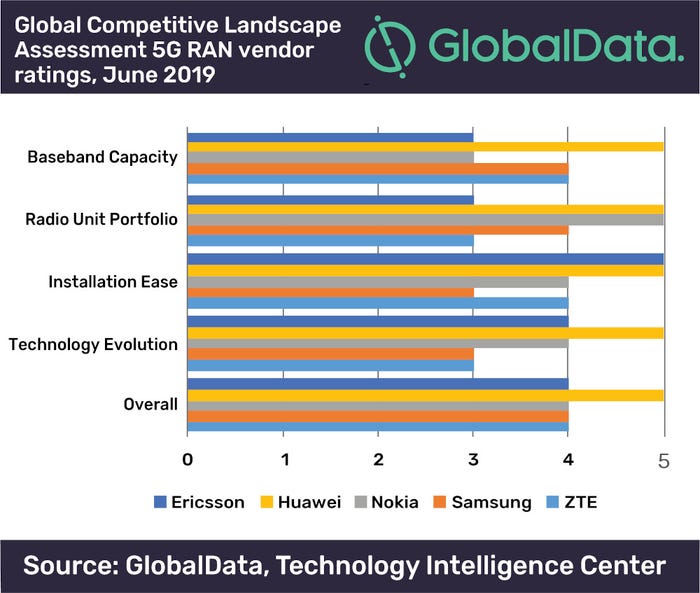5G RAN market analysis has Huawei in the lead5G RAN market analysis has Huawei in the lead
Analyst outfit GlobalData has claimed the first competitive landscape assessment of the 5G RAN vendor market, naming Huawei as the clear leader.
June 25, 2019

Analyst outfit GlobalData has claimed the first competitive landscape assessment of the 5G RAN vendor market, naming Huawei as the clear leader.
The methodology isn’t detailed, but it seems to consist of giving each of Ericsson, Huawei, Nokia, Samsung and ZTE marks out of five on the following criteria:
Baseband capacity
Radio unit portfolio
Installation ease
Technology evolution
Nobody scores less than three in any category but, as you can see from the table below, Huawei gets top marks across the board. GlobalData then aggregates those to make an aggregate score, with everyone getting four except Huawei on five. This seems a bit generous to Samsung and ZTE, both of whom averaged 3.5/5.

“The 5G RAN market is extremely competitive in these early stages,” said Ed Gubbins, Principal Analyst at GlobalData. “Operators’ decisions today will direct the next decade of global telecom investment and ultimately usher in fundamental changes to the way we live and work in the 5G era.”
“The first wave of 5G RAN equipment, called ‘non-standalone 5G’ relies on existing 4G LTE infrastructure for some functions. So in the race to win 5G deals with operators, each vendor has a strong advantage with operators that already use their 4G gear.
“Standalone 5G, which requires a 5G core, will give vendors a better chance to penetrate new operator accounts and grow their global market share. We expect the standalone 5G RAN market to start ramping up in 2020.”
Conspicuously absent from all this analysis are geopolitical considerations. It’s all very well Huawei having the best offering, but if much of the western world won’t allow it to be involved in its 5G markets that doesn’t count for much. It’s also interesting to note that the report suggests Nokia’s radio unit portfolio is much better than Ericsson’s, which in turn is easier to install.
About the Author
You May Also Like










.png?width=300&auto=webp&quality=80&disable=upscale)


_1.jpg?width=300&auto=webp&quality=80&disable=upscale)